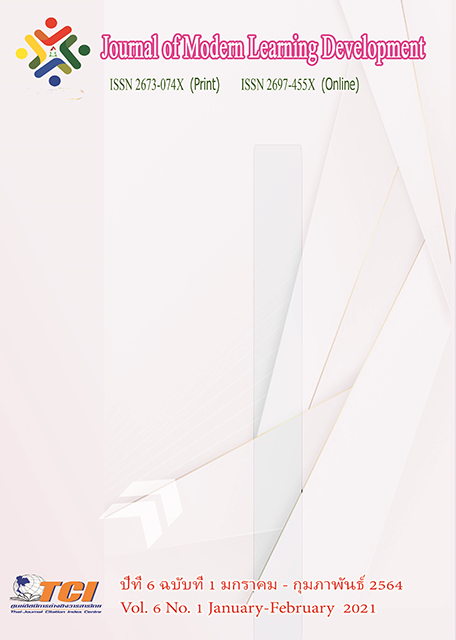The Relationship between Economic Growth and Sustainable Development Index in ASEAN Countries
Main Article Content
Abstract
The objective of this study was to analyze the relationship between economic growth and sustainable development index in ASEAN countries covering economic, social, and environmental aspects based on the Sustainable Development Goals (SDGs) by using time-series cross-sectional data or panel data of 10 ASEAN countries from 2008 - 2017. The econometric analysis consisted of the stationary test using the LLC Unit Root and the Granger Causality test, respectively.
The empirical study found that:
The sustainable indicators of the official development assistance and the employment to population ratio (Over 15 years old) affected the economic growth of ASEAN countries at a statistical level of 0.05. On the other hand, the economic growth of ASEAN countries affected the sustainable indicators of the life expectancy rate at birth for males and females at a statistical level of 0.1. In line with the suggestions of this study, ASEAN should emphasize policy to support aid fund allocation to develop the member countries’ economies as well as raise the ASEAN labor productivity to gain competitiveness as production base industry of the region and the world levels.
Article Details
References
ธีรกานต์ พงศ์พิชญามาตย์. (2560). พัฒนาการการให้ความช่วยเหลือต่างประเทศของออสเตรเลีย. วารสารอิเล็กทรอนิกส์ Veridian มหาวิทยาลัยศิลปากร (มนุษยศาสตร์สังคมศาสตร์และศิลปะ). 10 (2), 466-483.
Cleveland, H. (1981). The management of sustainable growth. New York: Pergamon.
Connor, J. C. (1979). The nature of the quest for a sustainable society. In Quest for a Sustainable Society. Pergamon Press: New York.
Jahoda, M., Pavitt, K. L. R., Cole, H. and Freeman, C. (1973). Models of Doom: A critique of the Limits to Growth. New York: Universe Publishing.
Giles, D. (2011). Testing for granger causality. Econometrics Beat: Dave Giles’ Blog. Online. Retrieved November 3, 2020. from https://davegiles.blogspot.com/2011/04/testing-for-granger-causality.html
Granger, C. W. J. and Newbold, P. (1974). Spurious regressions in econometrics. Journal of Econometrics. 2 (2), 111-120.
Granger, C. W. J. (1969). Investigating causal relations by econometric model and crossspectral methods. Econometrica, 37(3), 424-438.
Kapsos, S. (2006). The employment intensity of growth: Trends and macroeconomic determinants. In Labor Markets in Asia. London: Palgrave Macmillan.
Khan, A. R. (2007). Growth, employment and poverty: An analysis of the vital nexus based on some recent UNDP and ILO/SIDA studies. United Nation.
Levin, A., Lin, C. F. and Chu, C. S. J. (2002). Unit root tests in panel data: Asymptotic and finite-sample properties. Journal of Econometrics. 108 (1), 1-24.
Maestas, N., Mullen, K. J. and Powell, D. (2016). The effect of population aging on economic growth, the labor force and productivity (No. w22452). National Bureau of Economic Research.
Pirages, D. C. (1977). Sustainable society: Implications for limited growth. Connecticut: Praeger Pub Text .
Toda, H. Y. and Yamamoto, T. (1995). Statistical inferences in vector autoregressions with possibly integrated processes. Journal of Econometrics. 66 (1-2), 225-250.
World Bank. (2020). DataBank: World development indicators. Online. Retrieved November 3, 2020. From: https://data bank.worldbank.org/reports.aspx?source=world-develop ment -indicators
World Commission on Environment and Development. (1987). Our common future. Oxford: Oxford University Press.


